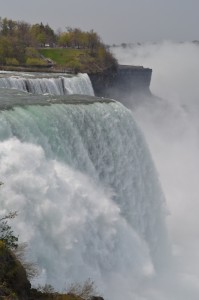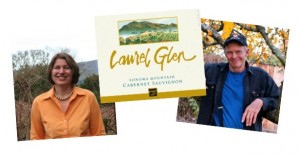 We hope this missive finds you well and enjoying the newly arrived summer season.
We hope this missive finds you well and enjoying the newly arrived summer season.
In just a few days, Tracy will be off to the Kingdom of Navarra in Spain’s Basque region visiting wineries and historic sites.
She’ll return in plenty of time for our 2011 Season launch on June 25, 2011. You won’t want to miss this special evening, which will feature a brief wine class on Australian wine, followed by a concert and story-telling by Australian folksinger, Susanna Carman, as part of her U.S. tour. Enjoy wines and cheeses as you listen to Susanna sing and share her tales of living Down Under.
Another new and exciting class this year is a wine and chocolate tasting with Roxanne Browning of Exotic Chocolate Tasting on August 14 (this is a date change from what was previously announced). Roxanne will share the world of artisanal
chocolate from bean to bar, while Tracy will focus on the world of wine, with a delicious line-up of wines carefully selected to pair with Roxanne’s chocolates.
Visit our website to sign up for these and all other classes.
Drink wisely and well,
Tracy Ellen Kamens, Ed.D., DWS, CWE
CEO: Chief Education Officer
and
Jared Michael Skolnick
COO: Cork Opening Officer
Yours ‘til Niagara Falls
Last month, we had the pleasure of visiting the Niagara wine regions in both Canada and the U.S. Within the region, which centers around Lake Ontario, a wide range of microclimates is made possible by not only the maritime influence, but also, the Niagara Escarpment. The escarpment is a ridge of cliffs, which was formed by millions of years of uneven erosion (softer rocks eroded more quickly than harder rocks) and is responsible for the sheer drop of Niagara Falls. As a result, agricultural areas south of the escarpment are warmer due to the protection that the escarpment provides. As a prominent topographical feature, the Niagara Escarpment is recognized by UNESCO as a World Biosphere Reserve and extends on both sides of the border.
Within Canada’s Niagara Peninsula Viticultural Area are 10 different sub-appellations. Interestingly, the diverse variety of these microclimates has carved out areas that emulate Burgundy and Germany, while the warmer areas look to Bordeaux as their model. While the northerly location of this area likely brings cold weather to mind, some areas, such as the St. David’s Bench, experience sufficiently high temperatures in the summer, permitting Cabernet Sauvignon and Cabernet Franc to ripen to maturity. In the U.S., the Niagara Escarpment American Viticultural Area (AVA) is a recent addition to New York’s wine region having only been established in 2005. With a much younger history, the American wineries are taking advice and cues from their Canadian cousins, whose region dates back to the 1970s.
Of course, it does get quite cold in the late fall and throughout the winter season, which provides ideal conditions for the production of true icewine/Eiswein (as opposed to man-made ice wine). Waiting until the grapes freeze naturally on the vine – at great risk – the frozen grapes are picked in during the last days of December into the month of February. This harvest work is not for the faint of heart given the brutally frigid weather (10-14oF) in which it must be conducted. With the grapes significantly longer tenure on the vines, the sugar levels have risen dramatically while the action of freezing allows much of the water content to be removed, thereby concentrating the juice.
Although there are numerous soil types throughout the region, areas with limestone rich soils account for distinct minerality in many of the wines and the opportunity to blind taste two Chardonnays (from different vineyards, but produced in an identical way) at Tawse Winery (Canadian Winery of the Year 2010) reinforced the impact of soil or as the French would say le gout de terroir (taste of the terroir). While there were some misses among the wines we tasted, overall, we were impressed with the quality of the wines, particularly those from Canada. Several of the American wineries are still focused on American grape varieties as well as fruit wines and nearly all are only a few years old and the lack of maturity (as did their potential) showed.
TASTING NOTES
Tawse Winery, Quarry Road Chardonnay 2009, Niagara Escarpment, Canada, $34.95
The aforementioned Tawse produces its wines following the principles of biodynamics and whether you ascribe to their philosophies or not, there is no denying that they are producing great wines. Reminiscent of Burgundian Chardonnays, this wine is dry with vibrant acidity, medium to full body and notes of mineral, melon and citrus.
Henry of Pelham Family Estate Winery, Cuvée Catherine Rosé Brut Sparkling Wine NV, Niagara Escarpment, Canada, $30.00
Established in 1988, this winery is a true family affair with a lineage dating back to 1842. This Traditional Method sparkler is named for the matriarch of the family, Catherine Smith, and is a product of Pinot Noir and Chardonnay and 30 months of aging on the lees (dead yeast cells). The yeasty notes showed on both the nose and palate, joined by aromas and flavors of strawberry and a refreshingly clean finish.
Thirty Bench Wine Makers, Small Lot Triangle Vineyard Riesling 2009, Beamsville Bench, Canada, $30.00
While not exclusively devoted to Riesling, Thirty Bench does produce several different “small lot” Rieslings. Harvested from the estate’s Triangle Vineyard, this dry wine has high acidity, with bright fruit aromas and flavors of citrus and melon, culminating in a long finish.
Vineland Estates Winery, Riesling 1989, Niagara Escarpment, Canada
Among the oldest vineyards in the region, Vineland was initially founded in 1979 by the Weiss family from Mosel, Germany. Graciously pulled from the winery’s library by winemaker Brian Schmidt, this wine 20+ year old was pure proof that these Rieslings can go the distance. Aged characteristics of petrol and honey greeted the nose, while the palate was still fresh and alive with high acidity. Slightly off-dry with rich honey and citrus flavors, the wine lingered for a long time.
Arrowhead Spring Vineyards, Estate Syrah 2008, Niagara Escarpment, U.S., $34.95
Arrowhead is the culmination of Duncan and Robin Ross’ dream to own a vineyard, which they launched in the early part of the previous decade. This full-bodied, medium-tannic wine showed classic Rhone-style Syrah character with notes of meat, red fruits, spice, leather and black pepper.
Leonard Oakes Estate Winery, Vidal IceWine 2009, Niagara Escarpment, U.S., $49.95
A recent graduate (2008), Jonathan Oakes serves as viticulturist to this estate as well as winemaker for this and Schulze Vineyards and Winery. While medium-sweet on the palate, the bright acidity shines through avoiding any cloying sensations. Notes of honey, spice and apple linger in the long finish.

